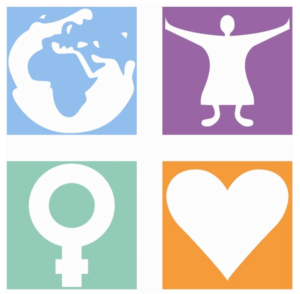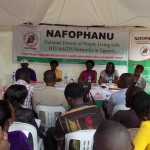The International Community of Women Living with HIV Eastern Africa (ICWEA), alongside health program managers, technical experts, community groups, and other partners, recently gathered to discuss how to improve health services in Africa. The main goal was to find better ways to integrate care for people living with and affected by HIV, and Hepatitis, while also including support for non-communicable diseases (NCDs) like heart disease and diabetes, and mental health issues such as depression.
One key topic was the importance of community-led health services. Brenda Facy from ICWEA and at UNITAID Community Delegation Member, spoke during a panel discussion, pointing out that more children are becoming infected with HIV, yet many mothers aren’t visiting health facilities for services to prevent mother-to-child transmission (PMTCT). Brenda emphasized that involving communities can help change this, as they play a crucial role in creating health services that people trust, use consistently, and can access locally.
Integrations will foster sustainability with communities at the center. Community-Led Monitoring (CLM) is crucial for evidence generation. Brenda added that incorporating CLM globally will promote accountability, improve resource allocation, and enable cross-country learning, thereby enhancing both national and international responses to health and social challenges. This trust can lead to higher rates of HIV treatment uptake, improved adherence to care, and greater retention.
The discussion highlighted recent progress and ongoing challenges. According to the 2024 UNAIDS report, sub-Saharan Africa remains the region most affected by HIV. In 2023, an estimated 25.9 million people in the region were living with HIV, with 90% aware of their status, 82% receiving treatment, and 76% achieving viral suppression. However, fewer children are being reached effectively, with 1.8 million children aged 0-14 estimated to be living with HIV and thousands still getting newly infected each year. This gap shows the need to make HIV services more accessible and effective for children.
The meeting also addressed the rising burden of NCDs, which are now common among people with living with HIV as they live longer and spend more years on treatment. Common NCDs include heart disease, cancer, diabetes, and mental health conditions like depression, all of which can complicate HIV treatment and health outcomes if not managed well. The World Health Organization (WHO) has been urging countries to integrate NCD care with HIV services, as combined care is often more efficient and beneficial to patients.
In addition to HIV and NCDs, Hepatitis remains a serious issue in Africa. In 2022, millions in the region were living with hepatitis B and C, yet few had been diagnosed or received treatment. To address this, WHO is encouraging health systems to include Hepatitis care within existing health services like HIV and TB programs.
Throughout the dialogue, all participants agreed that local communities play a vital role in supporting these changes. By involving community members in planning and delivering health services, programs can better meet people’s needs, especially in remote or resource-limited areas. This also encourages more people to seek and stay in care, leading to healthier communities overall.
This meeting is part of a larger effort by WHO and partners to work towards health targets for 2025 and 2030, including ending AIDS in children and reducing the impact of NCDs. The goal is to build more comprehensive, sustainable health care systems that address a range of health needs—making sure people living with HIV, hepatitis, and NCDs receive the support they need to live healthier lives.



